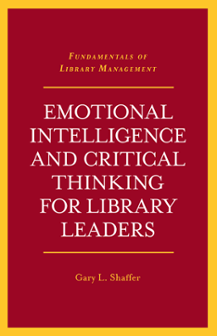
Index
Emotional Intelligence and Critical Thinking for Library Leaders
ISBN: 978-1-78973-872-8, eISBN: 978-1-78973-869-8
Publication date: 17 March 2020
Citation
Shaffer, G.L. (2020), "Index", Emotional Intelligence and Critical Thinking for Library Leaders (Fundamentals of Library Management), Emerald Publishing Limited, Leeds, pp. 141-144. https://doi.org/10.1108/978-1-78973-869-820201015
Publisher
:Emerald Publishing Limited
Copyright © 2020 Gary L. Shaffer
INDEX
Index
- Prelims
- 1: Emotional Intelligence: An Introduction
- 2: Self-awareness
- 3: Self-management
- 4: Social Awareness
- 5: Relationship Management
- 6: Traits and Practices of Emotional Intelligence People Outside of Libraries Find Important
- 7: Critical Thinking: An Introduction
- 8: Critical Decision-making
- 9: Critical Problem-solving
- 10: Writing Critically
- 11: Creative Thinking
- 12: In Closing
- Appendix A: Case Studies
- Appendix B: Kreitz’s 96 EI Traits
- Appendix C: Standard Memo Layout
- Appendix D: Elements of an Executive Summary
- About the Author
- Index